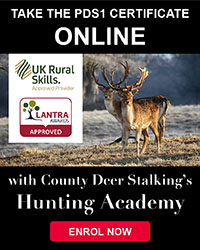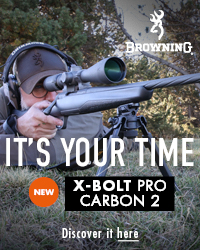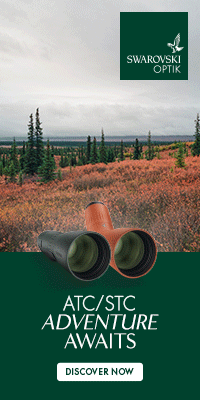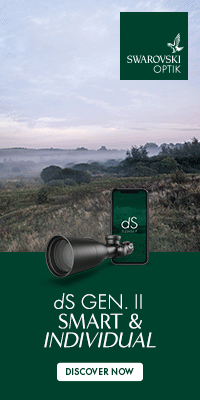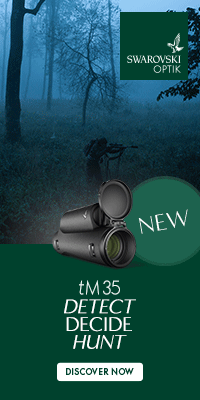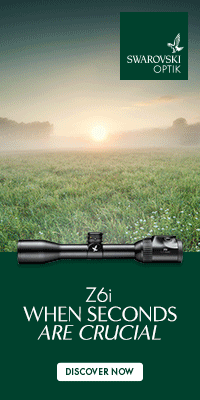Target Specific
- Details
- Monday, 05 October 2015
This month Dr Simon Lee turns detective in a hunt for an elusive problem buck.
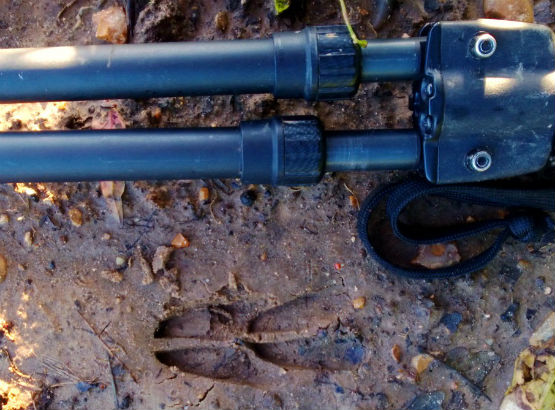
(Above: A distinctive curved hoof, arguably as distinctive as a fingerprint)
All permissions differ, just as all landowners differ. I have dealt with, and continue to deal with, all variations in landowner attitudes, from the; 'if it’s got four legs it's got to go' all the way through the spectrum to the 'don't shoot today, we've got guests staying and one of them thinks they're cute'.
Like it or not, I have to abide by the landowners wishes however a little power of suggestion goes a long way.
In dealing with landowners I try to be realistic about objectives and have the following fall back option up my sleeve if required, “ . . .well of course the only real solution is 2m high deer fencing, I have got a price here somewhere, sorry, what's that? Carry on with the cull as we discussed? OK, fine”. For one reason or another farmers in particular, seem to speak the dialect of financial logic very well.
It was on one such permission from which my report originates, a tiny site, sensitive crop, difficult access and security, but with the landowner firmly on side with regard to Section 7 of the 1991 Deer Act. This section of the law has been much abused as a route to ‘out of season’ shooting and can only ever be used as a defence.
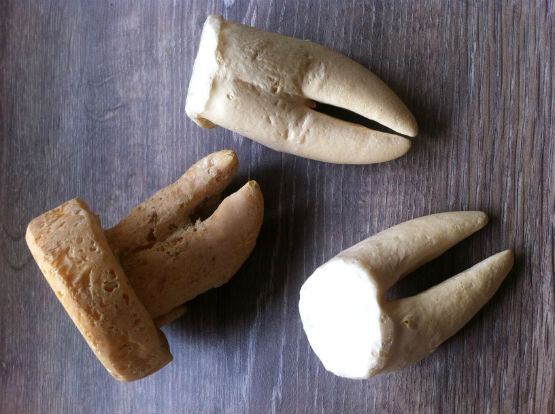
(Above: Moulds taken of the hooves)
Personally, I prefer not to shoot out of season to protect the integrity of the deer's social dynamic and population, but at specific times on this site it does fit the criteria, should matters ever come to court.
Having done well in control and management here over the past four seasons, reducing the Roe population to minimal sightings at key times, we experienced a post rut lull, no sightings, no tracks, a clear site. Then with foliage still in leaf and crops still unharvested, reports of a single deer started to filter back to me, worse still, the landowner had taken a photo of the buck, merrily munching down his precious crop like a conveyor belt.
In the spirit of mentoring and many hands make light work, I took my stalking apprentice out to help, between us we bumped the buck and it fled, leaving a still warm couch and some steaming droppings, that trip had to be chalked up to a lack of instantly ruthless action, lesson learned!
After a few weeks no other sign of any other deer was seen, and he was always cagey, around the periphery, not loitering.
When behaviour changes, so tactics must change, out came the cameras and for a week or so my silent spies recorded everything in their range, a supporting cast of rabbits, foxes, and curiously an excess of hedgehogs presented, a ‘spike’ in numbers, perhaps!?. But only one picture of our quarry was captured, a buck with small irregular antlers that normally wouldn't have made it past the gralloch.
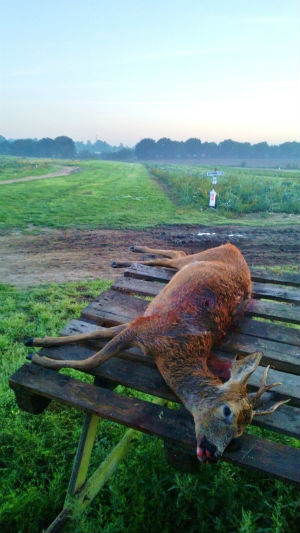 Generally I position my cameras with a point of reference in shot, much like the coloured strips on the sides of filling station door frames, they give an idea of the height of passers by. In this case a post with a bit of tape ringed around it did the job.
Generally I position my cameras with a point of reference in shot, much like the coloured strips on the sides of filling station door frames, they give an idea of the height of passers by. In this case a post with a bit of tape ringed around it did the job.
Back to basics, I studied the sighting area on the ground.
(Left: Simon gets his man)
I love mud, it helps me to determine numbers, gait, age, movement and direction. I was schooled in this as an inquisitive child by the local drunkard, who, when not asleep from the effects of millet beer, was a retired poacher. He didn't speak my lingo or I his, so I would be treated to hilarious pantomimes of animal behaviour by way of explanation, all in earnest dumbshow. That was some time ago...I digress.
Having seen a few slot marks in the soft mud on a few occasions, but nothing else, matters were becoming personal. This had all the hallmarks of a territorial buck defining an area, but unusually, post rut.
My cameras were now showing a repeated ingress point and regular time frame, the net started to close. At this stage I went for a positive identification, and armed additionally with some modeling alginate I found a distinctive set of slot marks.
Alginate, a seaweed derivative, is used for dental impressions and making accurate mouldings that are perfect to the last pore, with all four hooves done I had a positive identification for the future. A distinctive curved set of hooves was produced, arguably as distinctive as a set of fingerprints.
After a few tantalising blanks and with growing landowner pressure, we had more camera sightings and tracks, by now a set of epoxy hooves had been made for direct comparison.
Eventually we sighted our quarry and he was duly culled, when the hooves were compared to the castings they were identical and I was pleased to inform the landowner that like the Mounties, ‘we got our man’.
Sadly, as one tape breaks another whistle blows, nature abhors a vacuum and within days there were more Roe sightings, and we started all over again.
Once an ingress point is established I like to rake up the mud near it and later study any disturbances, much to the mirth of bystanders, one even went so far as to ask me if anything was sprouting, and like my mentor long ago, I said nothing but shook my head unsteadily and carried on.
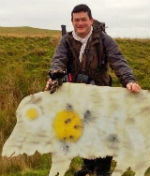 In the future, detection techniques might include analysis of tufts of hair and droppings for DNA tracing, but surely there are limits, aren't there? A little technology goes a long way in this era of image intensifiers and thermal imagers, I have recently heard of one colleague who does his population counts with a drone aircraft, where will it all end?!
In the future, detection techniques might include analysis of tufts of hair and droppings for DNA tracing, but surely there are limits, aren't there? A little technology goes a long way in this era of image intensifiers and thermal imagers, I have recently heard of one colleague who does his population counts with a drone aircraft, where will it all end?!
To read more from Simon follow this link: how-to-make-venison-jerky


